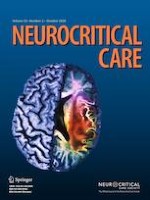Erschienen in:

03.08.2020 | Response to Letter To The Editor
Response to Drs. Quintard, et al.
verfasst von:
Aaron M. Cook, Lori Shutter
Erschienen in:
Neurocritical Care
|
Ausgabe 2/2020
Einloggen, um Zugang zu erhalten
Excerpt
Drs. Quintard, et al. we thank you for your attentive reading and consideration of the Neurocritical Care Society Cerebral Edema treatment guidelines [
1]. Your letter brings up the point that our writing group debated and deliberated over the most. We agree that the literature in this area is not definitive and that variability exists across the studies and meta-analyses regarding the effect of hypertonic sodium solutions (HTS) and mannitol on cerebral edema or intracranial pressure. …